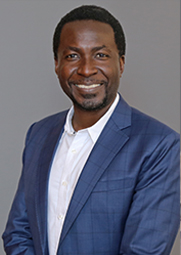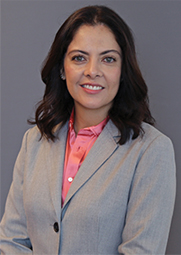Research Seed Funding awards are competitively awarded annually by the Office of the Vice President for Research and help faculty more successfully advance competitive research proposals by supporting the generation of preliminary data, pursuing new directions or collaborations in research, and other endeavors. Competitive proposals for sizable projects are expected to be submitted to an external funding organization within a year of the completion of the Research Seed Fund period. Proposals had been solicited in the fall, and were reviewed by panels of faculty reviewers.
Projects from the School of Engineering include: Jesse Ault, who is investigating “High-Intensity Water-Assisted Laser Desorption-Ionization”; Monica Martinez Wilhelmus, who is researching “Engineering a New Generation of Bio-inspired Autonomous Underwater Robotic Sensors”; Daniel Mittleman, who is investigating “Enabling Mobility in Terahertz Networks”; Shouheng Sun, who is partnering with Andrew Peterson to further explore “CO2 Capture by Conversion: Carbon-based Chemicals from Carbonate Reduction”; and Kimani Toussaint, who is researching “Vector Beam Pulse Oximetry.”
Summaries of the engineering projects are as follows:
High-Intensity Water-Assisted Laser Desorption-Ionization

The interaction of matter with high-intensity laser radiation can lead to the absorption of multiple photons. For ultrashort laser pulses, the sudden deposition of large amounts of energy creates non-equilibrium states that rapidly evolve in time. This project explores the outcome of the interaction of intense, femtosecond duration laser pulses with the surface of liquid water. In analogy to the well-known process of Matrix-Assisted Laser Desorption/Ionization, we anticipate that water can be ejected from the bulk and form a plume that carries with it any molecules and ions that were dissolved in the liquid. The absorption depth of water for high intensity pulses is very small, on the order of one micrometer, so that only a thin surface layer of water is ejected. In this project, we use non-equilibrium molecular dynamics simulations to simulate the laser ablation of analyte molecules suspended in a liquid water bath. Both coarse-grained models using the CHARMM molecular dynamics solver and fully atomistic simulations will be performed to probe the underlying fundamental physical processes driving the desorption-ionization process and to characterize the ejected plume composition. This project has important applications for mass spectrometry, which is a frequently used analytical method in research labs and in the field. Advances could lead to smaller and more compact instruments, as well as tools with unique capabilities. This research will advance Brown’s position in the field through high-impact publications and by generating preliminary data that will lead to external funding to support collaborations with experimentalists from the chemistry department.
PI: Jesse Ault, Assistant Professor of Engineering
Enabling Mobility in Terahertz Networks

One of the challenging aspects of engineering a wireless network at very high frequencies is to determine how to maintain a high-quality link even when the receiver is in motion. In existing 4G wireless systems, which operate at lower frequencies below 6 GHz, this problem is addressed by using quasi-omnidirectional broadcasts. If the signal is broadcast in all directions, then a receiver is always within the broadcast sector of the base station or tower, and can move freely without worrying about losing the connection. However, at higher frequencies, particularly those above 100 GHz that are under increasingly intense investigation for use in future (beyond 5G) systems, this problem is much more challenging. At these high frequencies, connections will need to rely not on omnidirectional broadcasts, but instead on very directional pencil-like beams. To maintain a link even when the receiver is mobile, this beam must be dynamically steered so that it continuously points in the correct direction. To date, no realistic solution to this challenge has been identified; as a result, beam steering is now a primary concern in the design of systems that will operate in this frequency range. In the proposed research program, we will explore the use of a space-time-modulated metasurface, a micro-antenna array subject to a complex temporal and spatial modulation pattern, to provide this beam steering functionality. If successful, our results will establish a new paradigm for the design of terahertz wireless links.
PI: Daniel Mittleman, Professor of Engineering
CO2 Capture by Conversion: Carbon-based Chemicals from Carbonate Reduction


A dream technology would capture CO2 directly from the air and use it as a feedstock to produce renewable carbon-based fuels and chemicals, rather than relying on fossil fuels. Nearly all approaches to date have separated CO2 capture and CO2 conversion into two distinct steps, but the compounding inefficiencies make the process impractical. This proposal targets a key step in the CO2 capture/conversion processes by studying catalytic approaches to carbonate reduction. CO2 can be easily captured by an alkaline solution and by converting CO2 to a carbonate, but this carbonate is difficult to reduce. In this project, we will first react (saturate) atmospheric CO2 in an alcoholic alkaline solution to produce an alkylcarbonate, and will then reduce this carbonate via either electrochemical or chemical reduction method. Aided by computational design, we will prepare and study Cu-based nanoparticle catalysts to reduce the carbonate to an active form of carbon. Our goal is to demonstrate a scientifically viable catalytic approach to bridge CO2 capture and conversion. The research will provide promising solutions to climate change and sustainability issues associated with CO2 emissions.
PI: Shouheng Sun, Vernon K. Krieble Professor of Chemistry, Professor of Engineering
Co-PI: Andrew Peterson, Associate Professor of Engineering
Vector Beam Pulse Oximetry

The onset of COVID-19 has made the rapid and accurate detection of irregular oxygen saturation levels important in curbing the number of resulting deaths. As a result, the past year has seen significant interest in traditional photoplethysmography (PPG) technology, namely pulse oximeters, to monitor oxygen saturation levels. Moreover, there has been an increased demand for smartwatches and other wearables that can accurately carry out on-demand PPG measurements. However, several studies have reported that this optical technique overestimates the actual oxyhemoglobin saturation in patients with darker skin tones, leading to silent hypoxia and a potentially disproportionately higher number of deaths for black and brown patients, in particular. This work will focus on developing a novel PPG technique to mitigate the issue of skin tone, and other related skin-based confounding effects such as wrinkles and tattoos, using an optical polarization vector beam. Compared to other algorithms that exploit polarization to suppress skin effects and increase accuracy, our approach enables multiple polarization measurements in parallel, thereby offering increased speed.
PI: Kimani Toussaint, Professor of Engineering
Engineering a New Generation of Bio-inspired Autonomous Underwater Robotic Sensors

Metachronal swimming is a propulsive gait allowing small aquatic organisms of O(10) mm to perform up to 1000-meter-long vertical migrations in the ocean. By sequentially beating appendage pairs and modulating the forces on their body while swimming, marine crustaceans (e.g., krill) can effectively sustain long-distance migrations. However, the mechanism of metachronal swimming is poorly understood due to the small size of the organism and the lack of force and flow field measurements. In this project, we will combine standard experimental techniques in fluid mechanics and unique robotic models to answer fundamental scientific questions regarding thrust generation and flow-structure interactions. Using our unique metachronal robotic model, we reproduce the swimming kinematics of Antarctic krill, an abundant animal species of Earth. We will combine flow visualization with force measurements to provide a quantitative evaluation of the links between swimming kinematics, force production, and vortex dynamics during forward swimming. Our results will lay the foundation for the development of a new generation of underwater robotic platforms that can effectively perform essential underwater activities, including exploration, targeted sensing, and filtering of micro-particles.
PI: Monica Martinez Wilhelmus, Assistant Professor of Engineering